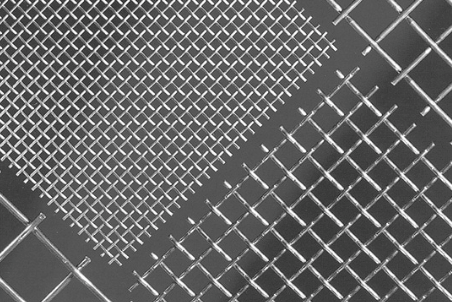Woven Wire Expansion & Contraction: How Temperature Affects Woven Wire
Woven wire mesh is often praised for its customization, durability, and versatility, providing efficient filtration/screening to countless industries. But something that isn't talked about enough is how woven wire mesh behaves in various environments.
Temperature, for example, is an environmental factor that is constantly variating, which can cause the woven wire to expand and contrast. That said, what does woven wire expansion and contraction mean to your operational success?
Having been in the woven wire business for over 150 years, W.S. Tyer is here to share the experiences we've had over the years to ensure you have the utmost confidence in your woven wire mesh solution.
And with that, this article was written to provide insight into the thermal reaction of woven wire mesh, giving you a heads-up of what to expect. You will learn:
- The definition of wove wire expansion
- The definition of wove wire contractions
- The concern associated with woven wire expansion and contraction
- How to prevent woven wire expansion and contraction
What Is Woven Wire Expansion?
Woven wire expansion is the occurrence in which the dimensional properties of woven wire mesh change. The thermal expansion coefficient of woven wire varies based on the alloy.
It is important to always consider woven wire expansion, especially in application that subjects woven wire to variating temperatures. This is because woven wire expansion is known to cause increased mechanical stress, warping, and breaks.
What Is Woven Wire Contraction?
Woven wire contraction is best defined as the reduction in dimensional properties of woven wire mesh. Much like woven wire expansion, the degree of contraction is based on the alloy used to fabricate the weave.
This is typically equivalent to the thermal expansion coefficient of the alloy. To that end, failure to account for woven wire contraction can cause gaps in your filtering/screening process, functionality concerns, and mechanical stresses.
What Issues Can Arise When Woven Wire Expansion and Contraction Occurs?
Woven wire expansion and contraction are the results of dramatic temperature shifts. When either occurs, both the performance and the durability of the mesh can be affected.
One of the more common issues that you may run into stems from increased mechanical stress. As your mesh expands and contracts repeatedly, you may begin to notice it becoming more brittle, which can lead to broken wires.
You may also find that your woven wire begins to warp. This, of course, comprises the mesh's structural integrity, which can affect how well it fits your equipment.

Warping can also alter the profile of the pore openings of the weave, which translates to a decrease in accuracy and throughput.
If your woven wire component underwent a welding process, you should be mindful of the seams over time. Constant expansion and contraction can weaken the weld seams, leading to component failure.
Looking at how the mesh interacts with your equipment, contraction, in particular, can create gaps in its housing. This compromises any sort of seal that must be created, which results in loss of system pressure.
But when you look at all the issues that can arise, it is discovered that expansion and contraction ultimately decrease the expected lifespan of woven wire.
How Do I Prevent Woven Wire Expansion and Contraction?
It is important to account for woven wire expansion and contraction when designing woven wire, designating allowable thresholds for each. Preventing woven wire expansion and contractions starts with selecting the right alloy.
Wondering how to pick a suitable wove wire alloy? Read the article below:
You must identify an alloy that can accommodate the wire diameter, durability, weight contracts, etc., needed by your operation. But more importantly, an alloy that can accommodate thermal expansion coefficient at the expected temperature range of your operation.
Referring back to allowing designated thresholds, it is recommended that you incorporate flexibility safeguards when installing your woven wire components. This can look like leaving gaps for woven wire expansion, using expansion joints, and using adjustable fasteners.
You can also pre-heat or pre-cool your woven wire before installing it. This will give you a better understanding of how your mesh will react during operation, allowing you to address issues before they happen.
Once your mesh is installed and in use, it is critical that you monitor how it is reacting to the environment. If you are noticing mechanical stress concerns, warping, or breaks, you will want to either stabilize the environment of your operations are possibly try a new alloy.
Gain a Comprehensive Understanding of How the Environment of You Operation Can Affect Woven Wire Performance
Woven Wire expansion and contraction occur when extreme temperature variations occur and alter the dimensional properties of the mesh. When not properly controlled, that can have hindering effects on the durability and performance of your mesh.
But when it comes to environmental factors that can affect woven wire performance, it is important to understand that temperature changes are just the tip of the iceberg. Factors such as dissimilar metal corrosion must also be taken into consideration as they, too, can have a tremendous impact on performance.
Weaving woven wire into countless industries for over 150 years, W.S. Tyler wants to help you overcome and even avoid the roadblocks that are bottleneck the success of your operation.
Read the following article for an all-encompassing overview of dissimilar metal corrosion:
About Ronnie Brown
Ronnie is the Content Writer for W.S. Tyler and has four years of experience as a professional writer. He strives to expand his knowledge on all things particle analysis and woven wire mesh to leverage his exceptional writing and graphic design skills, creating a one-of-a-kind experience for customers.




